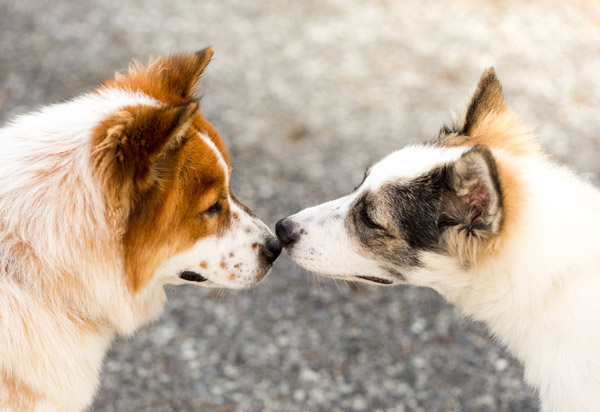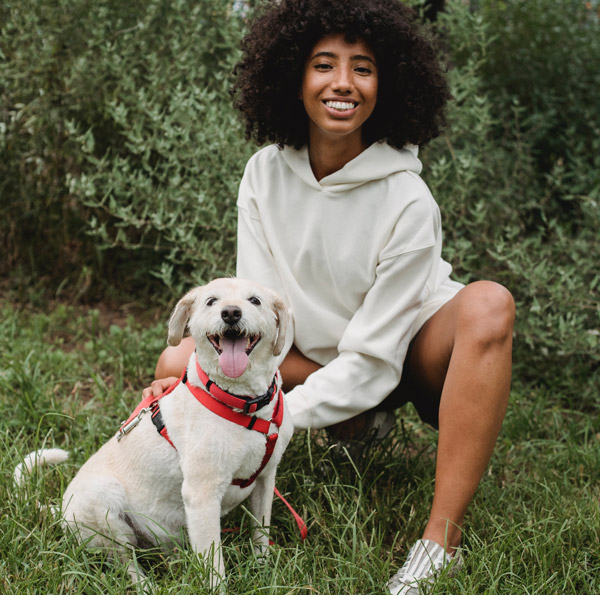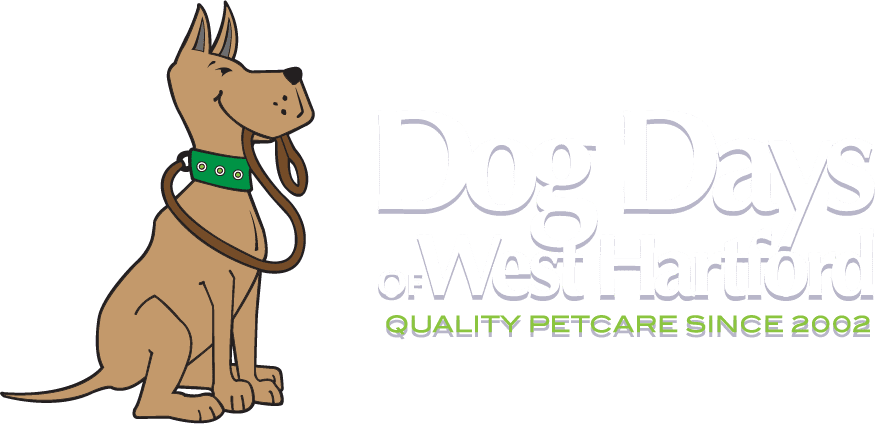Training Tips for Your New Dog—Socializing With Other Dogs & People

You’ve just brought home a new furry pal—congratulations! Whether you’ve got a puppy or an older dog, you may soon notice they’re lacking some much-needed canine social skills. Ideally, puppies are socialized in their first year, but if you’ve adopted an adolescent or older dog, hope isn’t lost. Dogs of any age can benefit from a little social training! Take a look at some of our tips below and help your new-to-you pup feel safe and happy in their new environment.
Start Small
Having a new dog is can be so exciting and there are surely many things you’ve been looking forward to doing with them. Before you do, remember, it’s smart to start small—too many new experiences and stimulus at once can result in an overwhelmed and fearful pooch. Instead, start with one new activity—like walking, being around new people, or other dogs— a week. Here’s where using a leash and muzzle can help, too. They allow dogs to be an observer first, before a participant, so they can take in their new environment. For example, although you probably can’t wait to take them to the dog park, it’s best to start slowly and only walk them around the perimeter of the park the first few times so they can see the other pups having fun.

Handle Them Daily
It’s especially common for rescue dogs to be unaccustomed to being handled, but all dogs benefit from learning not to fear touch from their owners (or their friends, groomers, and veterinarians). Gently pet or handle your dog on a daily basis, including their ears, heads, and paws. As your dog becomes more comfortable with touch, have other people begin to handle them as well. This will also help in times of emergency—should your dog get hurt, they will be less likely to become defensive being handles as they trust being touched.
Walk It Out
Taking your dog for a walk isn’t just about giving them some exercise. It’s an opportunity to observe and learn to interact with the world, and a chance to practice proper behavior. It also releases their pent-up energy, so they’ll be calmer and more submissive throughout the day. Remember, however, to resist pulling back on the lead or yelling at your pup as this will only increase their excitement level—and they will learn to associate it with walking (as well as interacting with other people and animals). Stay calm but assertive and distract them with a firm correction and/or walk away.
Keep Introducing them to New Dogs & New People
Consistent pleasant exposure to new dogs and new people will help your dog remain friendly and social throughout his/or life (and walks are a great time to accomplish this). This helps prevent fear of strangers and aggressive behavior around other pooches. But when socializing with other dogs, remember to…

Pick the Right Kind of Play
Puppies benefit from off-leash play with other dogs; this is one of the ways they learn behavioral cues. An older dog may no longer like playing with large groups of unfamiliar canines. If your dog growls, snaps, or avoids other boisterous dogs, this is not abnormal. They might just prefer to play with you. If your heart is set on social time with other dogs, keep to just one dog at a time in the beginning, stay on-leash, and allow for a little bit of distance until the dogs get comfortable around one another. Once you notice that both dogs appear happy and comfortable, then you try an off-leash session in a fenced private yard with no other dogs.
Be Rewarding
Find out what really motivates your dog—high-value treats? a favorite toy?—and reward their good behavior. By making good behavior or new experience rewarding, they’ll begin to associate it with joy and pleasure. Remember, however, to make sure the reward isn’t so distracting that it takes their eyes off the real prize—learning to be more comfortable with their surroundings.
Wear Different Clothes
Dogs can be afraid of long coats, backpacks, hoods, uniforms, sunglasses, hats—you get the picture. Help your dog learn there’s nothing to fear by wearing different styles of dress around them. This will help keep them from reacting when they encounter the same items on your guests or strangers out in the world.
Don’t Punish Fear
It’s easy to be caught off guard when your normally easygoing pooch lashes out. But remember, aggression is usually the result of fear. From the age of five months old, dogs interpret anything unfamiliar as a threat, which can trigger a fight or flight response. Punishing this reaction only confirms their fear, ultimately reinforcing the behavior. When fear aggression rears its head, calmly remove your pup from the situation and ask for a different behavior (sit, stay, go lay down).
Socializing your new dog might seem daunting, but done right, it can be truly rewarding. Not only will your pooch learn some much-needed manners; also a wonderful opportunity for them to bond to you (and you to them). Take it one step at a time and remember—this is the beginning of a beautiful friendship.
